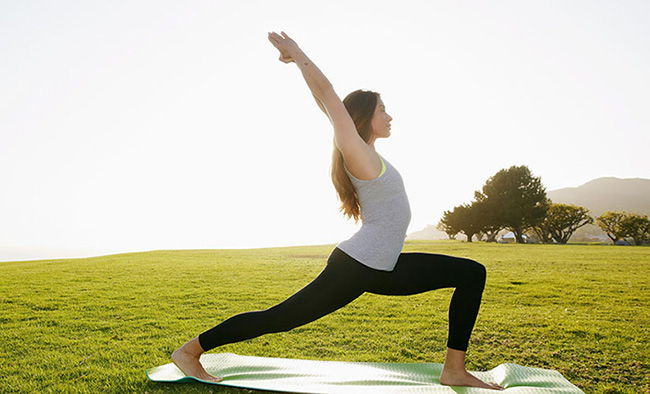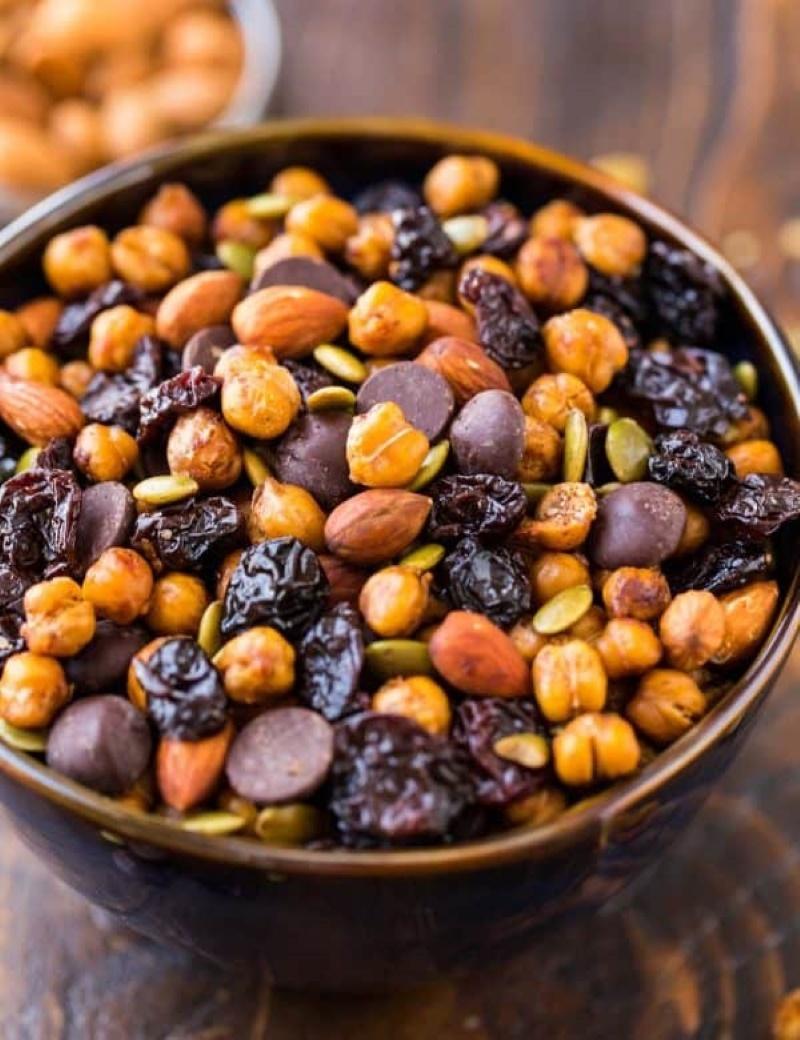There's a lot of exercises out there right now that you can see, lots of professionals and novices alike.
It's like having so many options when you go to the supermarket to choose what to eat, sometimes it leaves you wondering what exercise method you should choose.
Bellyfatzone tells you simply: Determine what you want, what you want to achieve when training.
When you answer this question, you will choose a suitable method for yourself. In this article, please refer to Weightlifting.
Weightlifting is a popular type of strength training to develop the strength and size of skeletal muscles, keeping the heart healthy; Enhancing muscle endurance, burning excess fat, and increasing resistance for a healthy body.
In addition, weightlifting every day gives us a toned body that makes us more confident to shine in life.
What is Weightlifting?
Weightlifting or weightlifting is also known as resistance training or endurance training. It involves moving parts of your body against some kind of resistance, like weights, resistance bands, weight machines, or even your own body weight.
Weight training is a great way to build muscle mass and make your muscles stronger. It can also boost your metabolism, strengthen bones and joints, improve muscle tone, and help you burn more calories.
Basic principles of weightlifting
Weightlifting also requires the right form and technique because doing it wrong can lead to injury or failure to achieve your training goals.
In addition to the fundamentals of strength training, another consideration when lifting weights is the equipment used. Equipment types include dumbbells and barbells, kettlebells, cables and pulleys (cable and pulley machines); weight plates, bench, preacher bench…
Different weight types will give different types of resistance, and often the same absolute weight can have different relative weights depending on the type of equipment used.
For example, lifting 10 kg with a dumbbell will require more force than moving 10 kg with a pulley. Also, although they may display the same weight, different machines may be heavier or lighter depending on the number of pulleys and their arrangement.
Weightlifting also requires correct form and technique because doing it wrong can lead to injury or failure to achieve your fitness goals. If the desired muscle group is not fully trained, the threshold will never be reached and the muscle will not gain strength.
How to do weightlifting to avoid injury and be safe
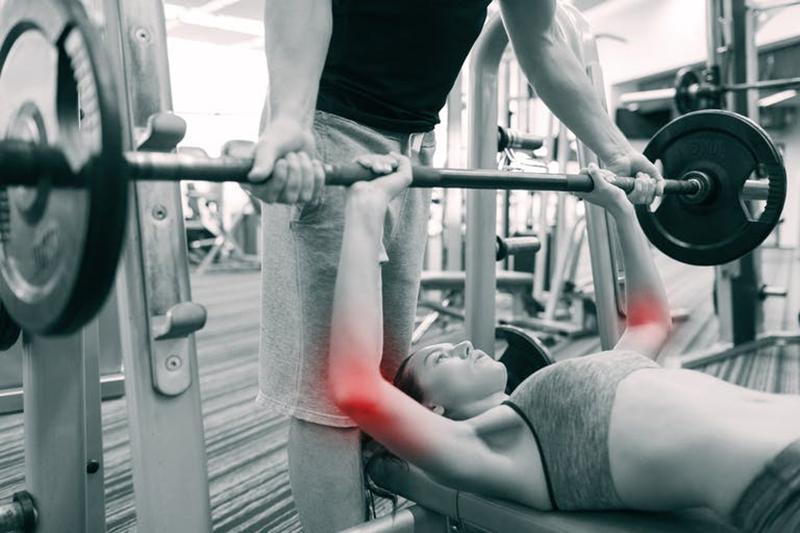
You should fully recover before you start lifting weights again, or you'll end up with a worse injury.
A weightlifting is a form of weight training that is only safe when movements are carefully controlled and defined. If injured, you should fully recover before starting weightlifting again, otherwise, it will lead to more serious injury.
Maintain proper form
Maintaining proper form is one of many steps to perfect the execution of a given technique. Correct form in weightlifting helps to improve strength, tone, and maintain a healthy weight. Proper form will prevent deformity or fracture.
- When the exercise gets tough towards the end of the set, there's a tendency to get distracted, which is to use poor form and cause other muscle groups to support the effort. Avoid heavy lifting and keep repetitions to a minimum.
- This can shift the effort to weaker muscles that can't bear the weight. For example, squats and deadlifts are used to work the largest muscles in the body such as the legs and glutes – so they require considerable weight. Beginners often want to rotate their back while doing these exercises. Relaxation of the erectors allowing the lower back to round can cause a vertebral collapse of the lumbar spine, potentially damaging spinal discs.
Breath
In weightlifting, as with most other forms of exercise, there is a tendency to breathe more deeply. This helps to meet the increased oxygen demand. Avoid holding your breath or breathing shallowly as this can lead to hypoxia, fainting, or increased blood pressure.
- In general, the recommended breathing technique is to inhale when lowering the weight (eccentric part) and exhale when lifting weight (concentric part). However, conversely, inhaling when raising and exhaling when lowering, may also be encouraged. Some researchers say there is little difference between the two techniques in terms of their effects on heart rate and blood pressure. It may also be recommended that weightlifters simply breathe in a way that feels appropriate.
Warm-up well before practicing
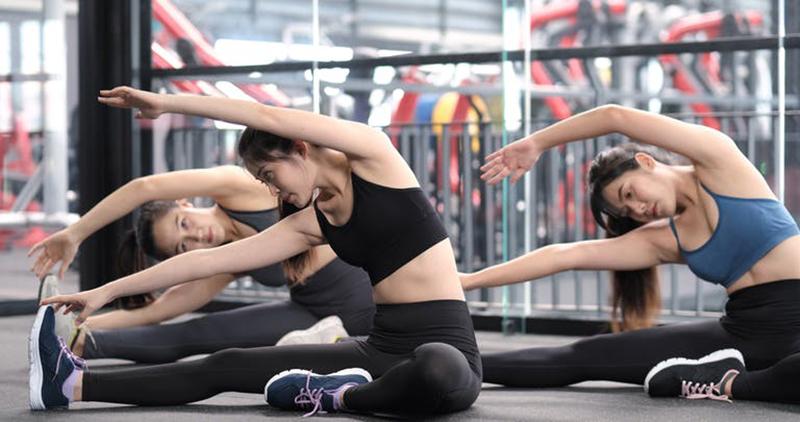
A good warm-up helps increase weight lifting and burn more energy
Not only weight training, but with all other gym exercises you need to warm-up well before practicing. With weightlifting exercises, you need to warm up your whole body thoroughly, especially the leg muscles and knuckles.
A thorough warm-up helps you to limit injuries while exercising, while also helping the arm's strength to be more flexible, better lifting weights, and burning more energy.
Get familiar with small dumbbells first
When you first start weightlifting, you should not immediately practice with large dumbbells because they are not only ineffective but also make you prone to injury as well as easily give up because of overtraining.
Get familiar with small weights first, when you are proficient with small weights, you will be more excited about weight training, so you can lift the weight higher.
Gradually increase the weight of the dumbbells and the training time
As the training time increases steadily, you will see the effectiveness of the weight-training process.
For weight training, gradually increasing the weight of the weight is necessary, helping you gradually increase the rate of calorie burning thanks to the amount of energy released at the heavier weight. Gradually increase the weight of the dumbbell as you feel the lifting and lowering of the dumbbell very smoothly.
Persistence
Not only weight training, but for any subject, perseverance is a decisive factor in your training results. Weight training and other gym exercises often have many obstacles and difficulties, so be patient and do not give up, success will come to you.
Lift weights properly
Each time you do weightlifting, you lift 10 times on one side, when the weight reaches 5kg, you gradually raise the weight, keep your balance, pull your stomach for 3 s and lift the weight for 1s.
The benefits of weightlifting

Weightlifting helps you own a toned body, healthy heart, and a happier optimistic spirit every day
Weightlifting not only brings good effects for the heart, helps to lose weight, improves overall health, but also helps toned and healthy muscles. Here are the benefits of weightlifting every day.
Weightlifting helps you burn fat
Many people think that the only way to burn fat is to do cardio. This is absolutely not true. In fact, cardio is an exercise that helps to lose weight and burn fat fast, but if we do weight training, the body has no muscles and lacks tone.
Cardio exercises are often more suitable for women, and for men to burn fat effectively, weightlifting should be combined with a scientific diet. As muscle mass increases, metabolism and fat burning increase.
Bone protection
Weightlifting is a form of a strength training exercise that increases bone density and reduces the risk of fractures, thinning, and fractures. In addition, weightlifting also helps reduce osteoarthritis effectively.
Human bones also need to be exercised, just like the brain needs to be cultivated and active to stay sharp. After the age of 30, the body's bone density gradually decreases each year with a small rate and osteoporosis in women up to 80% due to loss of bone density.
Proper weightlifting puts considerable stress on the bone and helps keep it strong. Parts of the human body have the ability to adapt to survive and so do bones, which need to become strong enough to withstand daily weight training.
Weightlifting exercises help regulate insulin levels and fight inflammation
In addition to preventing chronic disease, strength training (including weight training) helps burn excess glucose, providing many benefits for patients with type 2 diabetes, who always need to keep tight control of their sugar levels in the blood.
Weightlifting also helps reduce inflammation in the body, a symptom associated with many different diseases. Studies have shown that exercising regularly about twice a week reduces inflammation in overweight women. However, medical experts have not yet figured out the exact mechanism why proper weight training helps fight inflammation.
Improve posture to avoid osteoarthritis
In the era of technology development, many people have the habit of sitting and working for hours in front of the computer. This problem negatively affects your posture. Weight training will help straighten your abs and back and avoid osteoarthritis.
Helps improve health when doing weightlifting
You will find that weight training will help you get stronger from the first day of training. You eat more, worry less, and sleep better. Weight training also gives you a healthy heart, reducing the risk of cardiovascular diseases, diabetes, and blood fats. It also helps improve mental health, thereby reducing the risk of depression and other mental illnesses.
Burn more calories
Weightlifting is the most effective calorie-burning exercise because weightlifting movements require a lot of energy. With just a few weight training moves, you can have the same effect as running a dozen kilometers in an hour.
Improve balance and reduce the risk of falls
The right weightlifting exercises (even in the elderly group) help the practitioner maintain better balance and strengthen the legs. This is especially significant as weight training has made it possible for older people to maintain daily activities or even do some strenuous work and reduce the risk of falls.
Human muscle mass will decrease a lot with increasing age. However, muscle strength can be maintained through exercise (such as weight training). It is important to note that falls are a major risk factor for poor health in the elderly.
About 50% of hip fractures caused by falls will die after 2 years. However, thanks to weight training, the body's balance ability is improved. Therefore, proper weight training is an effective way to maintain balance and reduce health risks from falls.
Energy boost
Weightlifting helps to energize you, it will feel great mentally and physically as you see yourself improving day by day. Experience it, you will find that feeling above all wonderful.
Basic exercises in weightlifting (weightlifting)
There are many types of exercises in weightlifting that are suitable for many different goals. Here are some basic forms:
Squats
Squat – the king of exercises in weightlifting is a weightlifting exercise or using bare hands, the practitioner will have to stand up and sit down with two legs and use many different muscle groups on the body at the same time such as thighs, buttocks, hip. Usually, women will practice bare hands and men will use push-ups combined with squats.
Basic Squat – the most basic movement
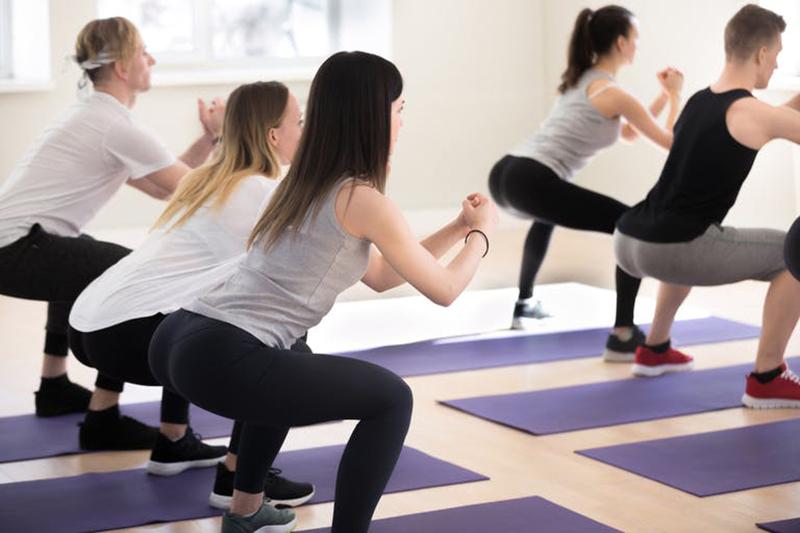
Is the most basic move of Squats
- Step 1: Preparation position: eyes straight ahead – chest and shoulders open – arms locked in front of the chest or crossed in front of the chest at shoulder height – legs apart – hip-width apart – toes and knees in the same direction.
- Step 2: Begin to lower your body: bend your knees, lower yourself slowly, putting your body weight on your hips and heels.
- Step 3: Return to the preparation position: Squeeze the abdomen and thighs, lift the body
Squat Lunge
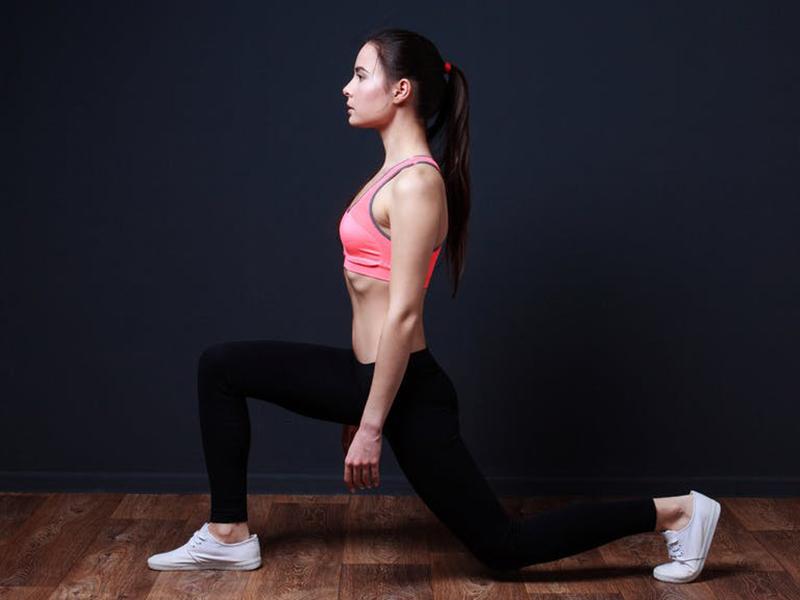
Is a combination of 2 squats and lunges to help increase the effectiveness of the exercise.
- Stand up straight, feet shoulder-width apart. Place your hands parallel in front of you.
- Do the Squat first. Push your hips down, and slowly bend your knees to a 90-degree angle. The emphasis is on the heels to help hold the pose longer.
- Stand up to the starting position and perform the lunge. Take a big step with your full stride, your knees forming a 90-degree angle.
Squat + Side Leg Raise
Do a combination of leg kicks
- Perform the basic squat as usual
- Stand up to the starting position of the Basic squat, lift your legs up and kick them at hip height
Lunges
Lunges is known as an exercise in weightlifting that helps develop around, naturally toned butt and is suitable for training for both men and women.
Deep Lunge
Deep Lunge is a variation of the basic Lunge, which works to help thighs and buttocks develop stronger and at the same time, it also works on the abdomen, helping to burn belly fat effectively. The basic steps to apply this Deep Lunge exercise are as follows:
- You are in a standing position, with your feet hip-width apart, your toes pointing straight in the direction of your knees, and your hands relaxed along your body or on your hips.
- Step left leg one long foot forward, so calf and knee make a 90-degree angle. Right leg extended behind, right toe touching floor and right heel lifted off the floor.
- Squeeze your abs to keep your balance, press your chest close to your left knee, your hands are perpendicular to the floor so that your palms face down, your head is up and your eyes are looking straight ahead.
- Bring your left leg back and bring your body back to an upright position.
- Continue to repeat the movement on the other leg according to the steps above.
- Repeat for both legs until the required number of reps.
Jumping Lunge
- You stand up straight, step your right foot forward, your hands are next to your hips and your palms are half-closed. Slowly lower your body down to a one-leg kneeling position, so that the right shin with the thigh forms a 90-degree angle, the left knee does not touch the floor. Back straight, neck straight, and eyes forward.
- Jump up and switch legs in the air, letting the front foot move back and the back foot forward. Continue to jump up and switch sides.
- Repeat the entire movement as many times as possible for the best results.
Side Lunge
- You start the exercise with a basic Squat position and spread your legs at a moderate distance to keep the best balance.
- Extend your right leg out to the side, so that the toe is in line with the knee; The left leg is kept firmly as a pillar and the hands are placed in front of the chest. Slowly lower your hips, inhale, and when the hip position is at its lowest, hold for 2-3 seconds. Exhale and bring your body back to the starting position.
- Continue to repeat the movement with the other leg and alternately practice each leg for the required number of times.
Deadlifts
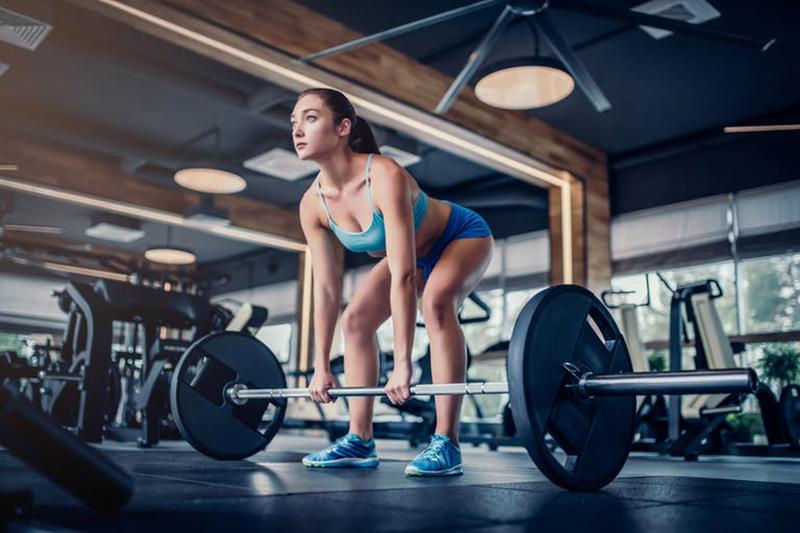
The deadlift is a difficult exercise and requires a high level of balance and coordination. In case of the wrong posture, there is a risk of injury, so when practicing you need to take steps.
It is one of the famous exercises that support muscle gain and fat loss very effectively. This is an exercise that helps build muscle strength, supporting other major muscle groups.
The strength of the core muscles of the body, including the core, lower back, buttocks, and abdomen, play an important role in health and support the body in almost any activity and movement.
Instructions to practice deadlift properly
The deadlift is a difficult exercise and requires a high level of balance and coordination. In case of the wrong posture, there is a risk of injury, so when practicing you need to take steps.
Stand in the right posture
- Stand shoulder-width apart, grip the bar with both hands so that the inner forearms touch the outside of the thighs, the shins slightly touching the bar.
- Palms facing back, front and back are applicable. Among them, the front hand is the best.
Posture adjustment
- Adjust the spine to the center position (neither up nor down, eyes looking straight ahead), and place the hips down. Pull in your lower abdomen to ensure that your pelvis is in the center.
- Shoulders facing back pressed together and directly above the bar – not arched. The chest is facing forward, not down. Before lifting weights, contract your shoulders and glutes to help build strength during the beginning of the movement.
Lift the weight
- Hold the dumbbell with both hands and push your legs down. The legs must generate the force to lift the weight. Hips and shoulders up at the same time, hands always kept tight.
- Combine upper body strength to push the weight up until the weight is in the middle of the upper thigh. During the straight-up, the toes need to push down the next after the heel push.
- Always keep the barbell in contact with your body throughout the movement.
Lower the weights
- Slowly lower the dumbbells until they touch the floor, then stop and continue. Note, it is necessary to lower the weight slowly and always tighten the muscle bundles throughout the movement.
- Do not rely on inertia to push the weight up the second time because it will not be good for the spine.
Pay attention when breathing
- Correct breathing is also extremely important because it helps in the direction of the lift. Before pulling weights, take a deep breath and hold for ¼ of the lift. Exhale slowly when you reach 2/4 of the lift and exhale completely when you reach the top.
The snatch and clean and jerk

As one of the subjects in weightlifting and a difficult subject, it requires strength, flexibility and a combination of flexibility of the whole body.
Both jerky and push movements are composed of two basic stages.
- In the first stage, the athlete lifts the weight using the lower body.
- In the second stage, push the barbell overhead using your upper body.
More specifically, the push can require up to 3 stages to facilitate analysis, including the first, second and third push. Complementing these phases are the preparatory position, the starting position, the recovery position, and the recovery position.
Prepared Pose
In this position, the practitioner grabs the barbell, preparing to move to the starting position. The pose only lasts for a moment, the person is focused and mentally prepared to lift weights. Normally, the practitioner will grip the bar, bend over or hold the body in a squat position. Starting position
From this position, the practitioner will start lifting the weight, this is the last position before the bar leaves the ground. Depending on the habits of the practitioner, this movement can be easily recognized or not.
- The first push is the period when the bar is lifted off the floor to the position where the last release was performed, in the middle of the thigh.
- The second push is the final push to bring the practitioner into a position where the body is fully extended. The push requires a flexible body movement (transition), bending both knees at the same time (scoop/double knee bend). The push starts from the moment the bar is at thigh level and ends when the knees and hips are fully extended.
- The third push is the movement from a fully stretched body position to a holding position.
Weight holding posture
The hold position is the position of the practitioner when the weights have been brought to the final position above the body, above the head in the loop and above the shoulders in the push.
Restoration pose
This is the movement of the practitioner from holding the weight to the final standing position when the weight is completed. In the recoil, this is standing up from an overhead squat. In the push-up, this is standing up from a front squat position.
Weightlifting training schedule
- If your goal is to build strength, but not increase muscle size, three weight training sessions per week will likely give you the results you need.
- According to a study published in the journal Medicine and Science in Sports and Exercise, lifting weights three times a week is just as effective as training more often to build strength.
- However, if you want to build muscle, you'll need more repetitions and more frequent workouts.
- You can work all of your muscle groups during the workout, do 1 or 2 sets of each exercise to start, and work your way up to more sets or heavier weights as the exercise becomes more complex. easier.
- Or, you can focus on certain muscle groups on specific days.
End:
At the end of the day, you know how this exercise will make your body move and change and if this is what you really want.
View more:
- How to Breathe During Gym Workout?
- What is the Best Exercise in Bed to Reduce Belly Fat?
- Top Warm Up Exercises Before Workout Bodybuilding Increase Exercise Performance
If this is exactly what you envision in your mind and is what you want to achieve, then go ahead and practice.
Ref:

